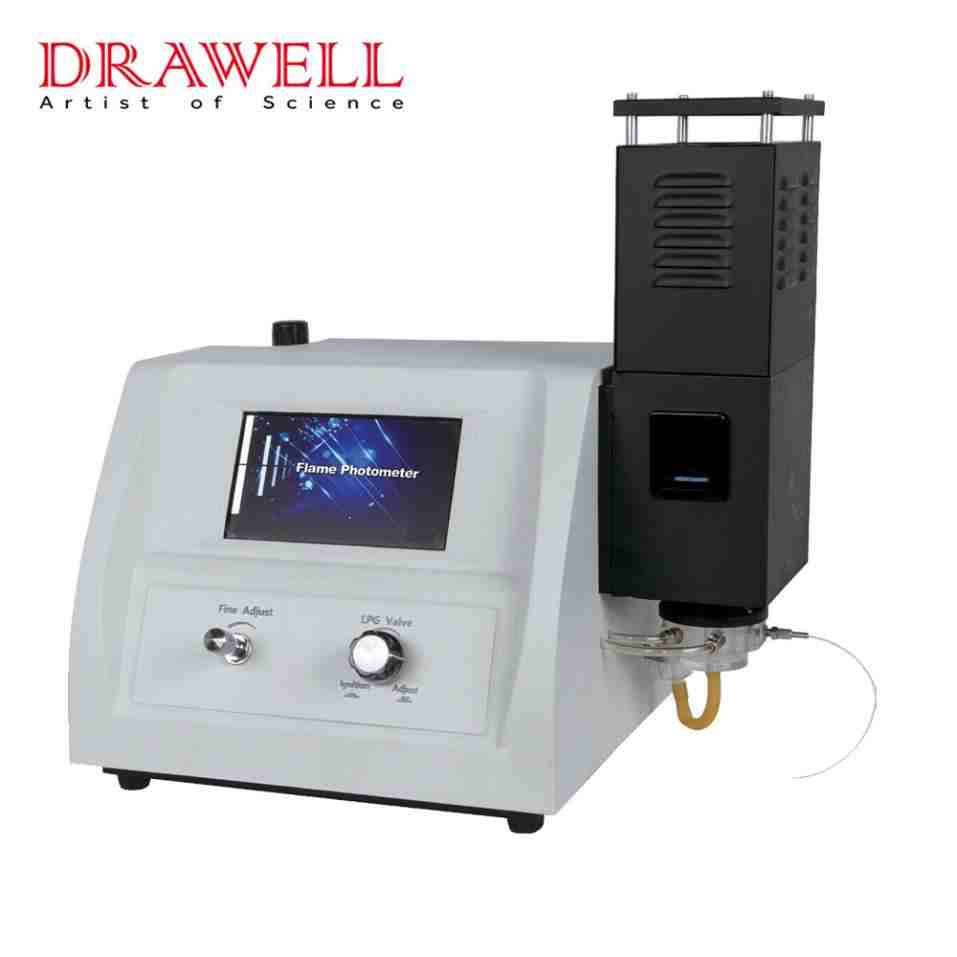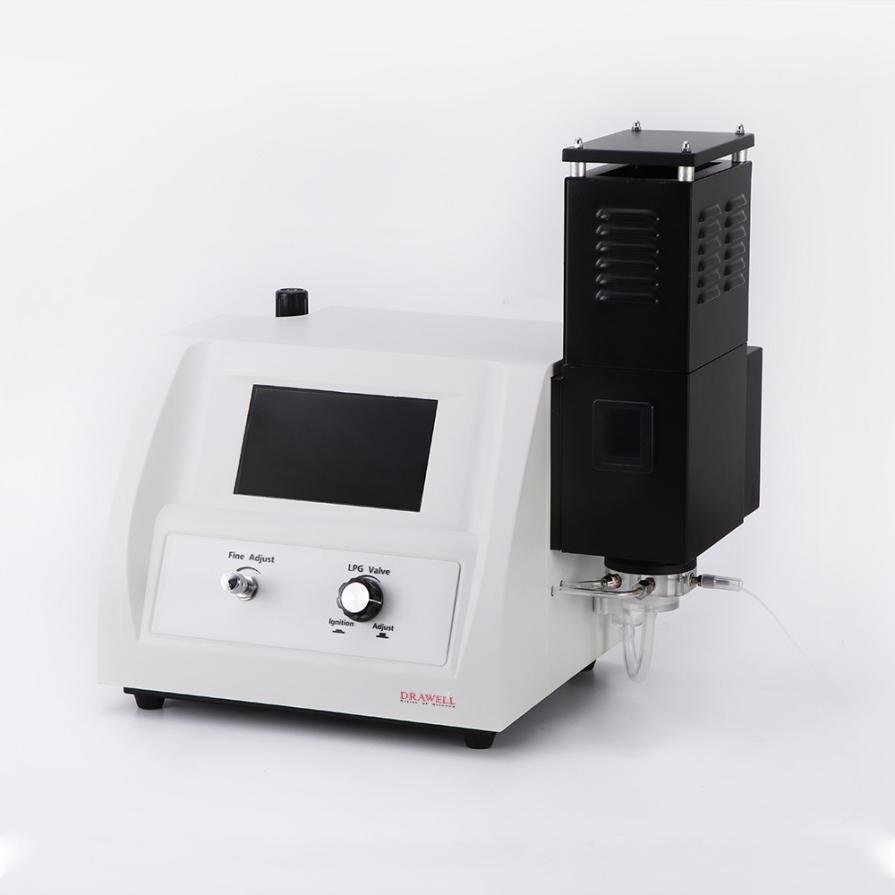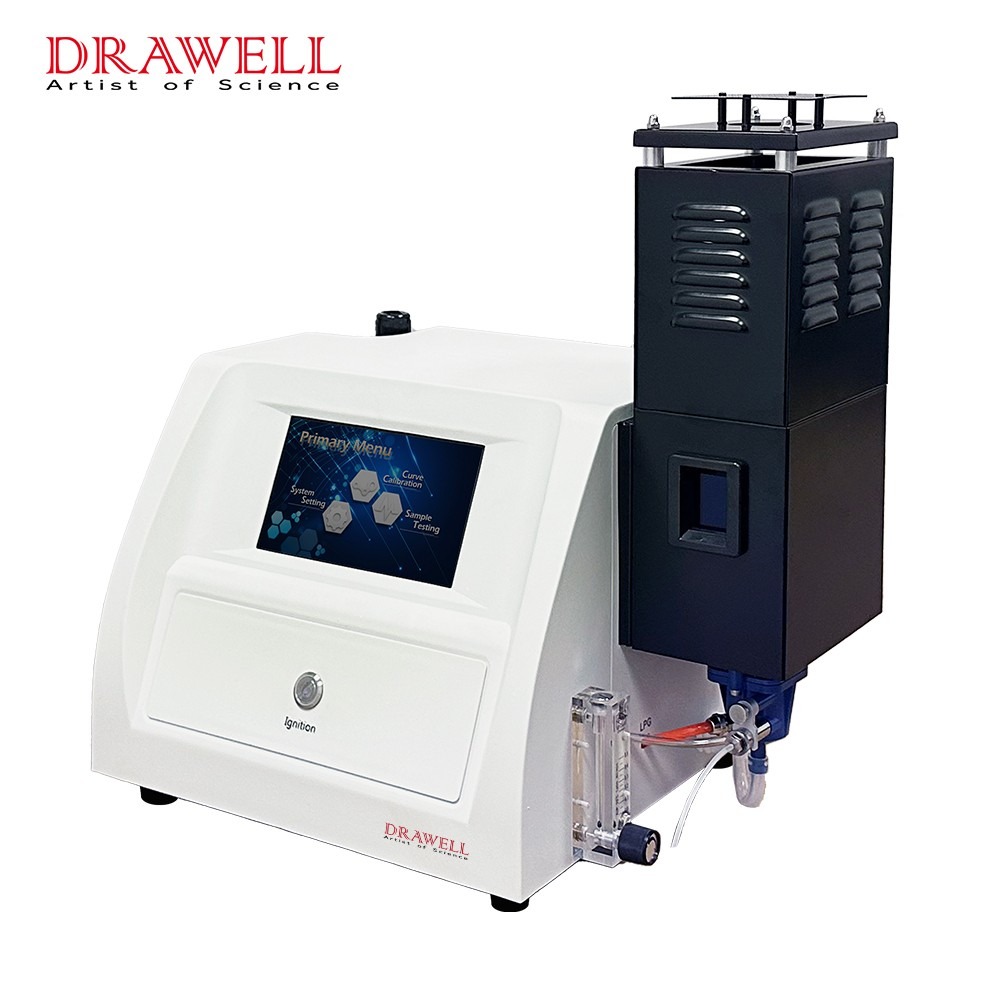A flame photometer refers to an analytical instrument based on the basic principle of emission spectroscopy. Using the principle of atomic emission, the corresponding substances are atomized, and the flame is used as the excitation light source. The excited electrons are at a high energy level, and they will transition back to the ground state when unstable. The photoelectric detection system is used to measure the emission of the exciting element from the excited state back to the ground state. Different atoms have different electron energy levels, and transitions will emit light waves of different wavelengths. Therefore, the element type and its content are judged according to its characteristic spectrum and light wave intensity.
For example: when salt is placed in a flame, the flame turns yellow. This is because the outer electrons of the sodium atoms in the salt absorb the heat energy of the flame and jump to the excited energy level, and then return to the normal state from the excited energy level. Electrons release energy. This energy is characterized by the emission of a spectral line yellow spectrum (main wave 5893A) at a wavelength unique to sodium atoms. Using the heat energy of the flame to excite the atoms of the sodium element to emit light, use the instrument to detect the intensity of its spectral energy, and then determine the level of the sodium element in the material.

The Development of Flame Photometer
From the molecular structure theory, we know that the outer electrons of atoms always run along a fixed orbit. When they receive the heat energy provided by the flame, the electrons will jump from the original orbit to the excited energy level orbit, because they are attracted by the nucleus at the same time. when the electron returns to the normal state from the excited energy level, the electron will release energy.
This energy is expressed as a spectrum that emits specific wavelengths of its elements. The method of qualitative and quantitative elements by measuring the luminescence intensity of the wavelength of the specific spectrum of the element is called flame emission spectrometry, and the analytical instrument manufactured by the flame spectrum analysis method is called a flame photometer.
How Do Flame Photometers Work?
The flame photometer is quantitatively analyzed according to the Roman gold formula (1.1), as follows:
I=(aXc)^b
In the formula:
I – the intensity of the spectral line;
c—-the content of the element to be measured;
a——Constant related to the evaporation and excitation conditions of the element to be tested;
b—- Self-priming coefficient.
Because the flame is used as the excitation light source, the temperature can be kept stable by controlling the flow of air and gas, and because the liquid sample is used, the influence of the sample components is less, so a is a relatively stable constant in each measurement, Generally, due to the low concentration of the sample, the self-absorption can be ignored. Therefore, the above formula can be simplified to the formula (1.2), and the relative intensity measurement method can be used for analysis:
I = λc (1.2)
When carrying out flame photometric analysis, the liquid to be tested is transformed into a sol by an atomizer and introduced into the flame. The element to be tested generates ground-state atoms due to thermal dissociation and is excited in the flame to generate a spectrum, which is decomposed into a single color by a monochromator. After the light is measured by an optoelectronic system. Because the humidity of the flame is relatively low, only a few elements can be excited, and the obtained spectrum is relatively simple and has less interference. The flame photometer is especially suitable for the determination of alkali metals and alkaline earth metals that are more easily excited.
In the determination, to stabilize the flame and eliminate the interference of some elements, a “buffer” is often added to the determination solution. For example, when K, Ca, and Mg exist at the same time, they will affect the determination of each other. The solution acts as a “buffer”, and when a certain amount is added to the test solution, the effect is a single constant value.
The flame photometer is a relative measurement instrument. The concentration value of the tested sample is the relative value of the concentration of the standard sample under the same test conditions. Therefore, a set of corresponding standard samples must be prepared before the test, then the calibration operation is performed, and the curve is drawn manually or by the instrument, and finally the tested sample can be tested to obtain its concentration value or other required data.

Precautions for Flame Photometers
- Gas and auxiliary gas (air) must be dry, pure, and free from pollution;
- Keep the instrument room clean and ventilated;
- A stable power supply voltage of 220 V must be used;
- During the operation, the combustion chamber and the chimney cover are very hot, you can’t get close to your body or touch these places with your hands, and don’t look from top to bottom;
- The discharged waste liquid is collected and treated in a centralized manner;
- Keep the atomization chamber and the combustion head clean and maintained. If the high salt concentration sample is tested, the time for spraying and burning with distilled water should be appropriately long;
- The sample to be tested must be clear and cannot contain particulate matter. Always pay attention to the liquid level during operation, so that the injection tube only absorbs the upper layer solution;
- In order to avoid the influence of the previous test on the test, enter the “Clear” menu in the initial menu, and clear all the previous “calibration” and “test” data.

